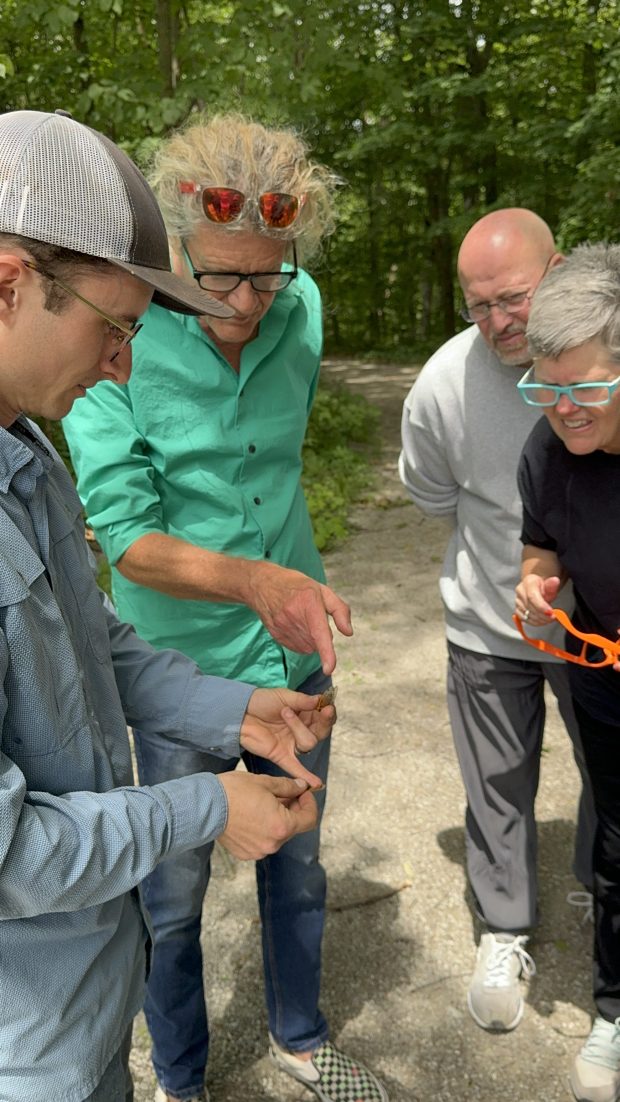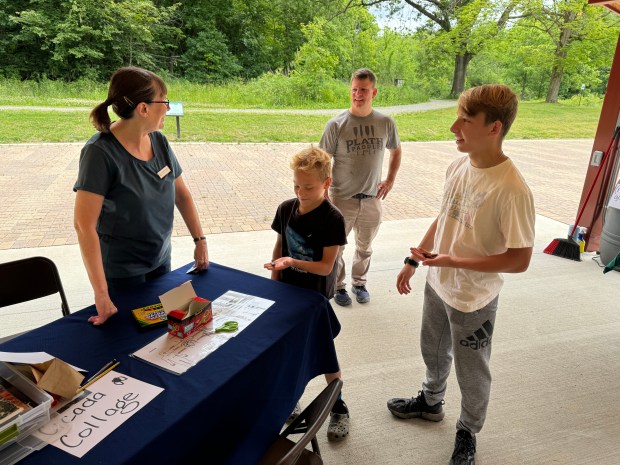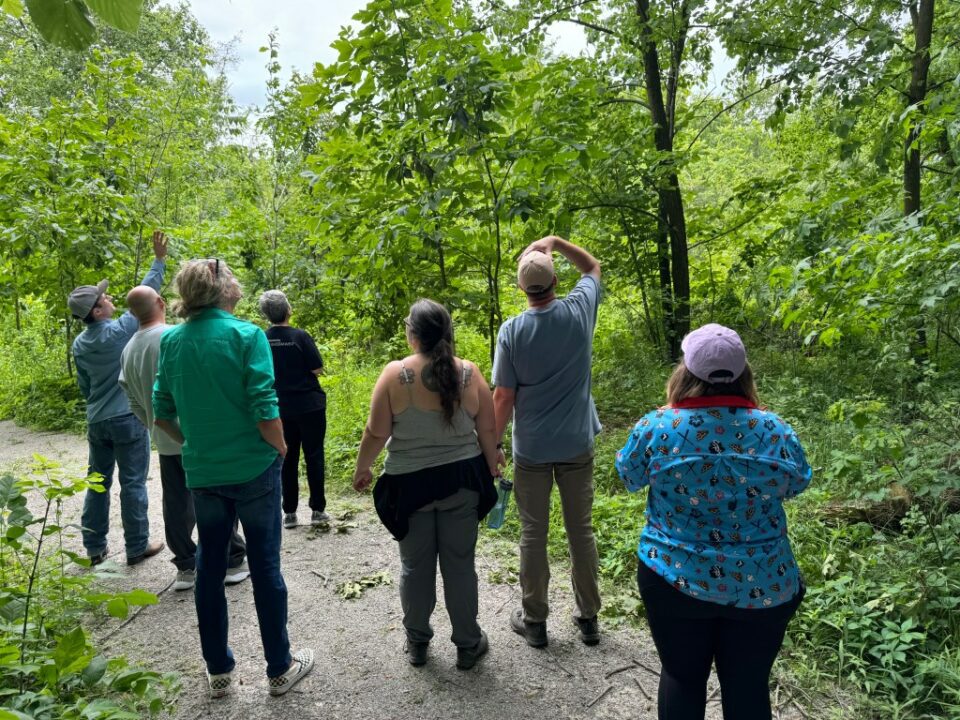[ad_1]
To some folks, the buzz may be loud and different, but to cicadas, it is a party that is 17 years in the making.
Periodical cicadas, unlike the annual cicadas that come and go, are here in the Midwest for 2024, and Shirley Heinze Land Trust decided to honor them with a Cicadapalooza on Saturday at Meadowbrook Nature Preserve, as it is one of the few spots in Northwest Indiana that is home to a significant population of the insects.
Visitors could observe cicadas up close in different life stages and their shells, make an origami cicada, make a collage, or hike through the preserve with a guide to learn more.
“Here we are asking people to be creative and make a cicada collage while learning about the body parts,” said Sarah Pavlovic, a volunteer naturalist with Shirley Heinze. “They can learn that the cicada has a head, a thorax, an abdomen and two pairs of wings.”
“I remember the last emergence 17 years ago and there is a lot to know,” said Pavlovic, of Chesterton. “Cicadas live a long life cycle underground but their emergence is staggered, in that they come out every year, being the annual cicadas.”

“The boys are screaming, they are calling for the females,” said Cody Banks, program director for Shirley Heinze Land Trust. “A male screams, the female goes and selects whoever they are mating with.
“After the female makes their selection of their mate, and they have produced eggs that they are ready to lay, they will go to the tips of the branches, and use their ovipositor (to cut a little slit in the wood) and they will lay eggs in it,” Banks continued. “In areas where there are so many of them, you will see twig dieoff (on the trees).”
The ovipositor is shaped like a long knife or saw and is the organ through which the female insect will deposit her eggs.
“When those eggs hatch, they will fall, and the tiny little babies will dig into the ground where they will live for the next 17 years,” said Banks. “They have crab-like claws that are really effective at digging.”
“They will tap into the tree roots and suck in sap from the tree,” said Banks. “The leading hypothesis I have heard that makes the most sense to me is that they are tapped into the tree roots, so the idea is that they are counting the number of times the sap changes to spring. That is pretty impressive somehow.”
“The thing that we do know is that there is a temperature cue when they emerge into the top of the soil,” said Banks. “They wait for the soil to get to a certain temperature and then they come out.”
“Their wings go in and out super fast, tens of thousands of times a second, and that is how they make their noise,” said Banks. “These spots are called tymbals, a white spot that wiggles near their wings and makes them move that fast.”

The insects can create sounds that often hit 90-100 decibels, louder than a hair dryer. While cicadas do not pose a threat to humans or pets, newly planted trees or shrubs may experience some impact.
“I think the periodical cicadas, much like the solar eclipse and northern lights from earlier this year, are an important reminder to enjoy all the beautiful things in nature, even, especially, if they’re short-lived,” said Mari Patis, programs coordinator for Shirley Heinze Land Trust.
“Also the 13- and 17-year cicadas are only found in the eastern United States, so locals can feel proud that they are home to one of the most spectacular natural phenomenon I’ve ever seen.”
To learn more about the programs offered through Shirley Heinze Land Trust or events at Meadowbrook Nature Preserve, visit heinzetrust.org.
Deena Lawley-Dixon is a freelance reporter for the Post-Tribune.
[ad_2]
Deena Lawley-Dixon , 2024-06-10 20:21:58
Source link


